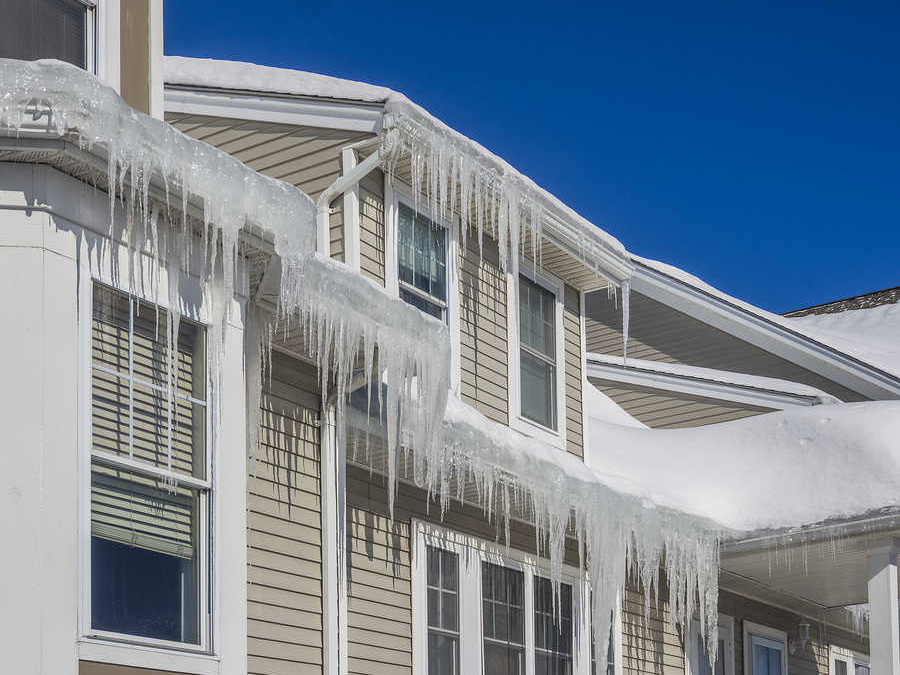Most of us have encountered ice dams on our roofs and the damage they can cause. Ice dams are created by the melting and refreezing, melting and refreezing , and melting and refreezing of the snow and ice on the roof. From the damage to the roofing structure [shingles, under lament, insulation, etc] and the subsequent water intrusion, they can be a very costly issue to address. But there are some measures we can take to help minimize their costly effects.
Ensure that your attic space is properly ventilated. Meaning that the intake venting is equal to the exhaust venting and that both are adequate for the volume of your attic to properly move the air inside it. This will help insure that the air in your attic space closely matches that to the outside air. Having the air in your attic warmer than the outside air will begin the melting of the snow and ice on your roof. Proper venting helps eliminate this.
Ensure that your gutters are properly cleaned. Gutters that are clogged with leaves and debris will not allow the melting snow and ice to vacate the roofing area. A good fall gutter cleaning will help reduce this effect.
Take the time and effort to ensure that all unit venting, such as bathroom fans, are evacuated to the exterior of the unit or through the roof. Such venting directly into the attic only adds heat and immediate moisture into the attic space.
Check with your local municipal requirements for the minimum R-Factor insulation required for your area. The insulation in the attic will help prevent heat escaping from the unit into the attic space.
If ice dams are identified, there a few steps you can take to address them. These include:
- Break up the ice in the dam itself. If its quite large, creating a channel in the ice so the water may flow into the gutters will help.
- Use a roof rake to remove the excess snow along the roof ridgeline.
- Apply ice-melt to the ice dam. You can spread the ice-melt over the dam or for a more long term solution you can fill socks or even pantyhose [tied off of course] with the ice-melt and it will slowly seep off keeping the ice dam at bay.


Recent Comments